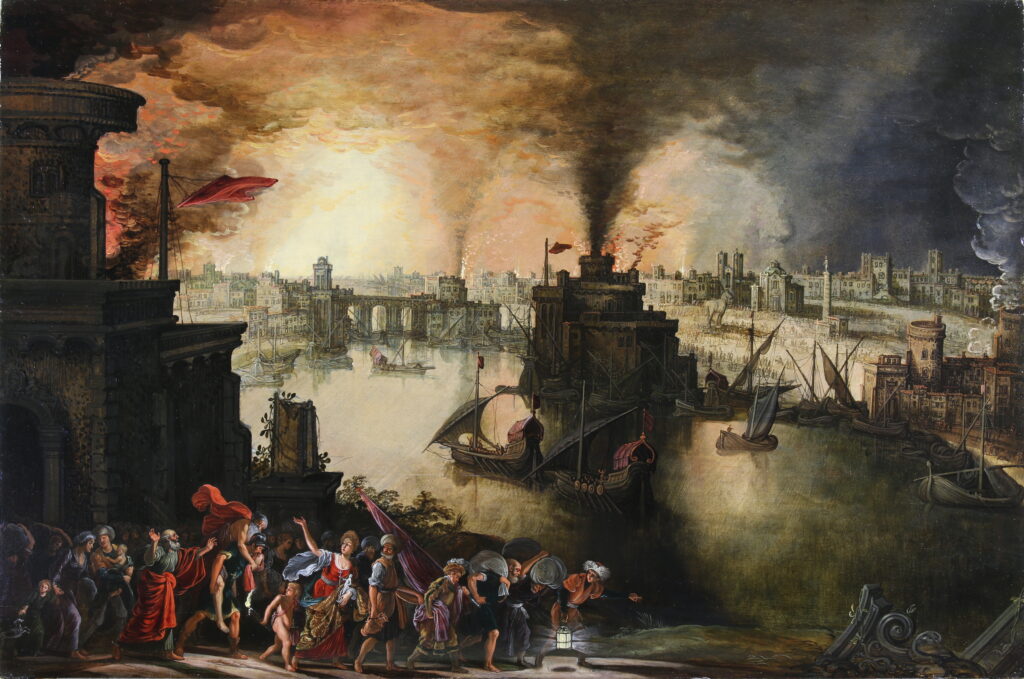Louis de Caullery and David Teniers II
c.1580 – 1621 and 1582 – 1649
Aeneas fleeing the burning City of Troy

Essay:
Louis de Caullery appears to have fulfilled the role of a 17th century social commentator in his depiction of palace and court interiors, bustling city views, and carnival scenes. His brightly coloured and finely detailed paintings are important documents of courtly life in the late 16th and early 17th centuries.
Caullery studied under the eminent Flemish landscape painter Joos de Momper and is recorded to have been accepted into the Guild of St. Luke in Antwerp in 1602. He was evidently successful during his lifetime as his works appear in many inventories. Finding inspiration in Italian models, Caullery introduced half tones to the Low Countries, providing the yellow and blue hues so successful in Italian paintings at suggesting sunlight and hazy distant views.
Caullery is known to have collaborated with other specialist painters in Antwerp including Abraham Govaerts, Frans Francken the Younger, and David Teniers the Elder.
The father of the great David Teniers the Younger, Teniers the Elder was born in Antwerp in 1582. Teniers registered as a pupil of his older brother at the age of thirteen and later travelled to Rome, where he became well acquainted with Adam Elsheimer (1578-1610). This must have occurred at some point between 1600 and 1605. By 1605-06, he was back in Antwerp where he registered as a master in the Liggeren (membership list) of the Guild of Saint Luke.
This painting was a collaboration between Caullery and Teniers. In Caullery's oeuvre, figures are characterized by an elongated finesse and usually occupy the foreground. While the latter is true of the present painting, the figures are unlike Caullery's typical designs and have instead been ascribed to Teniers. Teniers tended to towards more robust, muscular figures in expressive poses which we see here in the bowed Trojans.
Amongst the figures we see Aeneas carrying his father Anchises on his back and his young son Ascanius just in front. A woman, perhaps a priestess, calls the Trojans onwards and is holding what appears to be a statue of Poseidon. According to the mythology around the fall of Troy, Aeneas gathered his followers and small household icons of Troy's gods before he left the city. According to legend Poseidon had built Troy's walls and during the fighting had saved Aeneas from being killed by Achilles.
Caullery is solely responsible for painting the cityscape. Though it is not known with certainty whether he visited Italy, the city he has depicted bears a distinct resemblance to Rome. We see Greek troops flooding the square where a landmark very similar to Trajan's Column stands near to the huge wooden Trojan horse. The sky is filled with the smoke and flames of the marvellous city, its buildings perhaps moments away from being destroyed by the plundering Greeks.
Provenance:
Anon. sale: Hotel Drouot, Thierry de Maigret, Paris, 30 March 2012, lot 235 (as attr. to Frederik van Valckenborch),
Galerie Claude Vittet, Paris.